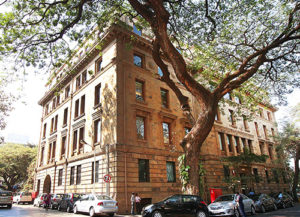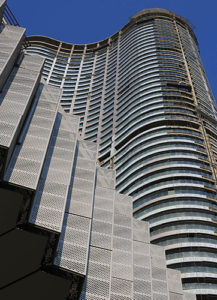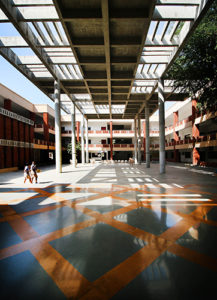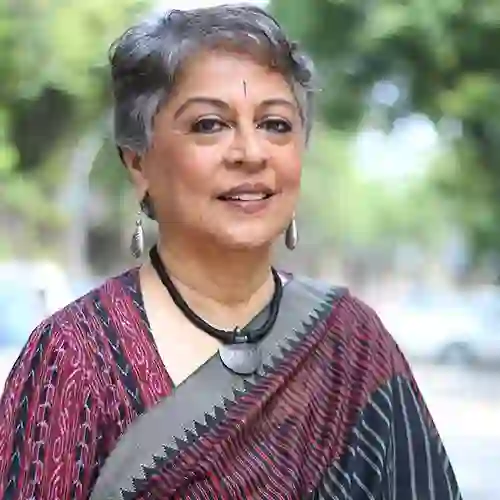Brinda Somaya (Founder) and Nandini Sampat (Director) from Somaya and Kalappa Consultants , spoke about their practice, their ongoing architectural projects, the role of façades and fenestration in buildings, latest trends and technologies in façade cladding, the importance of energy conservation and the role of façades and fenestration in achieving the same, intelligent and future façades and on renovation/restoration of façades of existing buildings. Below are the excerpts from the interview…

Please tell us about your practice?
Brinda Somaya (BS): It was in 1978 that my sister Ranjini Kalappa and I started our architectural consultancy firm. However, in two years she moved out of India and I was on my own. This led to the formation of Somaya & Kalappa, the company I founded and have headed for the last four decades.
My work includes corporate, industrial and institutional designs that extends to public spaces, which has been rebuilt and sometimes reinvented as pavements, parks and plazas. Each project is different, and each has to be part of its natural environment. We strive to produce work that is innovative, and practical while keeping in mind the social, economic, environmental and aesthetic issues relevant to each project.
Could you please talk about a few of your ongoing architectural projects?
Nandini Sampat (NS): We are presently involved in two projects with foreign partners. One project is an extension to an IT campus that Somaya & Kalappa started many years ago. We have been working with the New York firm for over 10 years now. I am sure both design firms have learnt from each other and mutually benefited from this relationship. The other project we have been working on with a New York firm concerns a very tall building in Mumbai. We have enjoyed the process of gaining technical knowledge from the New York team of architects, structural engineers and MEP consultants.
Tell us about your completed projects featuring innovative façade and fenestration designs?
BS: Our approach to building form is to design it substantially for daylight and focus on ventilation. Natural ventilation and lighting require façade openings in the form of windows, panels or grilles. For the 100-acre campus in Indore for TCS, we conceptualised it based on the Narmada river that flows nearby. The northern side forms are oriented such that they open up to vistas integrating the landscape just like the river exits the delta at the Gulf of Khambat. We worked with local craftsmen to bring in fabrics, jaalis and sculpture.

At the ground level, the buildings have been recessed to incorporate shaded walkways and the use of glass at this level maintains the connection between the inside and the outside. This element of glass also forms slivers of light in the night by providing illumination to the walkway and landscape beyond. The buildings thus appear to be floating and giving the architectural forms a sense of lightness while also providing deep shadows and reflections in the river plaza at night.

Façades and cladding industries in India have gone through a sea change in the past decade. Tell us about the latest in façade & cladding material and technologies available in the Indian market and those used in your projects?
BS: Architecture, whether formal or vernacular, when studied globally, reveals many climatically specific responses to shading and daylight, ventilation and breeze and thermal capacity. Sun shading devices inhibit the solar radiation incident on a building. They can be a dynamic façade, projections, cantilever louvers, fins, jaalis or even fabric, which can be used internally or externally or in between the building space, with the objective to cut the heat in summer and keep it warm in winter.
Glass is one of the most popular and versatile building materials used today. Solar control is important on south to west facing façades, since solar gains will be maximum during the hottest part of the day. Low-E coatings have been developed to minimise the amount of ultraviolet and infrared light that can pass through glass without compromising the amount of visible light that is transmitted.
NS: The privilege of working in a country like India is the ability to experience and discover an incredibly diverse range of cultures, historical narratives, geographical topographies, arts and crafts and much more. As Architects, this gives us a very wide range of options when working with materials, methods of construction and innovative topographical solutions. As a studio we spend a large amount of our initial conceptual design time in researching and understanding these aspects based on our site location.
What are the key factors to consider while designing and installing façades & fenestration?
NS: Passive façade and fenestration design in the tropics relies on the shading of spaces and façades from the heat of the sun and harnessing cooling breezes through appropriate parts of the building. Circulation systems can be thermally open, shaded from sunlight, and where possible, cooled by local breezes. The extent of fully enclosed (and frequently air-conditioned) space is thus kept to a minimum. Building orientation should predominantly face north-south, to allow for façade shading, and simultaneously allow generous glazed areas to admit reflected light into the interior. East and west façades should be designed with less glazing, as to prevent substantial heat gain.

BS: The concept of green is more than just a fashion statement. Everything must come as part of a bigger whole, one can’t design a glass box, add a windmill and claim to be eco-friendly. I also feel that the success of attaining an eco-friendly environment is measured by the sustainability of that environment.
Many aspects of a project may prove to be eco-friendly when newly installed, but the true test is visiting that project four to five years down the line and making sure everything works. Sustainability is achieved through understanding the site, designing appropriately, the judicious use of materials and various other parameters to be respected.
Please brief on the technical factors which help to build energy-efficient façades and fenestrations.

BS: There are several reasons to control the amount of sunlight that is admitted into a building. Whilst daylight is very important for the well-being of humans, well-designed sun control and shading devices can dramatically reduce building peak heat gain and cooling requirements and improve the quality of natural light of the building. Depending on the amount and location of fenestration, annual cooling energy consumption can be reduced.
When thinking of window designs, the size, tint and other aesthetic qualities come to mind. Low-e coatings play an equally important role and significantly affect the overall performance of a window and the total heating, lighting, and cooling costs of a building.
What are your views on future façades & fenestration technologies, and materials?
BS: Glazing has a large role to play in a building and research has proven that daylight has major positive impact on productivity and human health. The challenge remains on usage of optimum quantity and quality of glass in a building. We thus, need to understand on how heat is transferred through glass and the subsequent correlation between energy consumption and usage of glass.

NS: The future of design will be about collaboration. It will be about ideating, innovating and working together. It will be about looking after our planet and conserving our resources and how we use technology. Upcycling and recycling remain the keywords for the future.
BS: in this time of economic and climatic change, architects need to understand the value of retrofitting and re-architecture. We have a huge body of existing buildings which need to be adapted for the new generations ahead.
According to you, what is an intelligent façade? How can intelligent façades bring in the greenhouse effect and restricting intensive use of air conditioners?

BS: An intelligent façade is one that responds to the context in the most appropriate manner. Sustainability is too broad a term for me, and because it is so broad, people can say anything and construe it whichever way they want. My studio’s vocabulary determines sustainability from treading the land lightly to designing good lighting and ventilation. For instance, SNK built a school spread over 12 acres without any air conditioning, by designing courtyards, using double walls and planting trees strategically to maintain the air flow through the buildings during cooler hours of the day. We used the humble brick inside and outside and to create an “intelligent” façade.
You are doing several conservation projects. Tell us about your approach to façade/ fenestration conservation/ replacement in such projects?

BS: I believe there is a need for professional concern with the environment and an improved quality of human life for all Indians. I think that is a belief which I have had from the very first building I designed over thirty years ago. This was long before “green” became such an important word in an architect’s practice.
We have to go beyond buildings and work with programs that transform society. Conservation of buildings ally with the green movement because of the embodied energy present in existing structures.
In Bombay House, where SNK architects did complete restoration and refurbishment, the old windows are replaced with double glazed units that are comprised of high-performance glass on the outer side and double-glazed glass on the inner side thereby lowering the heat gain and the load of the HVAC systems.
This also mitigated the noise levels inside the building by 40 decibels. Façade lighting was done with energy efficient LED fittings designed on three different circuits for need based use.
There are many cladding materials available in the market. How do you choose the apt one for your project? What are the criteria?
NS: For us, the location of the project and the context, are the most important considerations while selecting materials. We strive to find the most appropriate response to the climatic and site conditions.

Architectural and sustainable strategy must go hand in hand in the design of the façades of buildings, with both, passive and active approaches. In addition to facilitating views and the appearance of the building, the materials of the façade (and each part of that façade) can contribute to natural ventilation strategies and heat gain and loss.
What is your advice to young, aspiring architects?
BS: Young architects are doing good work and I have full faith that they will protect our environment and our heritage and yet contemporise design and take it forward into our new tech-savvy world. As an architect, you need to understand people’s needs and anticipate changes. One needs to focus on the aspirations of young people and the changes happening in technology and their lives.
I have always been very optimistic and there are great young architects in our country today and I am sure they will take India on to the world map of architecture; I have no doubt about it.

Nandini Sampat Director, Somaya and Kalappa Consultants – Completed her Bachelor of Arts in Political Science from Smith College, USA. She then went to study law at the College of Law, London. Later she completed her Postgraduate Diploma in Architectural Interior Design from the prestigious Inchbald School of Design, London. She returned to Mumbai in 2007 and she joined Somaya & Kalappa Consultants while also completing her Bachelor of Architecture from Rizvi College of Architecture in Mumbai. As the Director at Somaya & Kalappa Consultants, Nandini is involved in all aspects of design, coordination and execution of projects.














